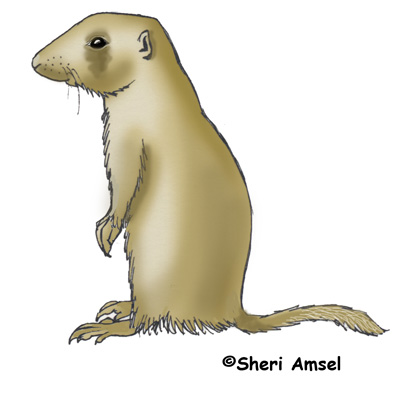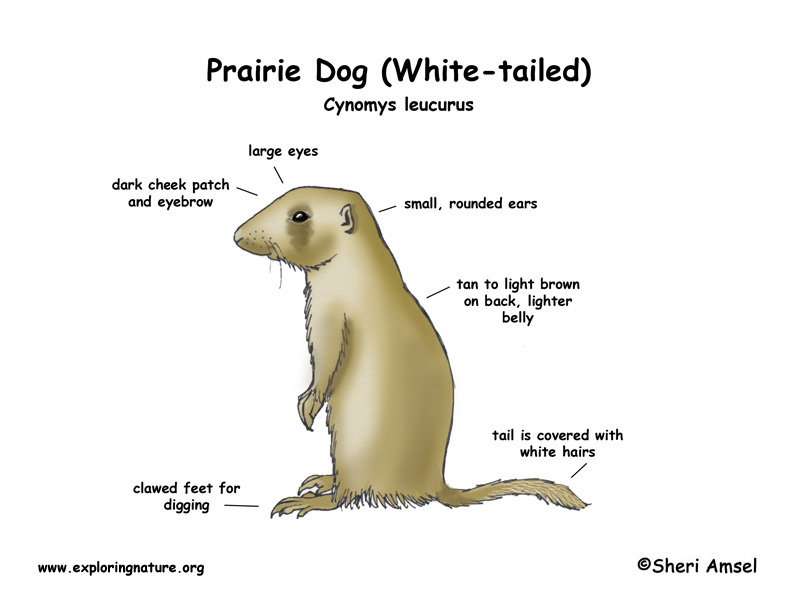

They are found most commonly in the grassland region of Wyoming, but can be found on some areas in Colorado, Utah, and Montana.
They live on dry (arid) grasslands and shrubby area.
They reach 15.5” long and weigh up to 3 pounds. They have small, rounded ears. They are tan to light brown with a dark cheek patch and eyebrow and large eyes. Their tail is lighter than their body and covered with white hairs.
They are active during the day (diurnal). They hibernate through much of the year starting as early as late-August (though more commonly by early October) through March.
They eat grass, plants and shrubs.
They are eaten by badgers, coyote, foxes, bobcats, golden eagles, hawks, and rattlesnakes.
They mate late in March when they wake from hibernation. Females are pregnant for about a month (gestation). They have up to 8 young, though usually about 5. They have only one litter per year.
They live up to 5 years in the wild, but die within their first year. They are listed as Lower Risk - least concern.
Kingdom: Animalia
Phylum: Chordata
Subphylum: Vertebrata
Class: Mammalia
Order: Rodentia
Suborder: Sciuromorpha
Family: Sciuridae
Subfamily: Xerinae
Genus: Cynomys
Species: Cynomys leucurus
When you research information you must cite the reference. Citing for websites is different from citing from books, magazines and periodicals. The style of citing shown here is from the MLA Style Citations (Modern Language Association).
When citing a WEBSITE the general format is as follows.
Author Last Name, First Name(s). "Title: Subtitle of Part of Web Page, if appropriate." Title: Subtitle: Section of Page if appropriate. Sponsoring/Publishing Agency, If Given. Additional significant descriptive information. Date of Electronic Publication or other Date, such as Last Updated. Day Month Year of access < URL >.
Amsel, Sheri. "Prairie Dog (White-tailed) " Exploring Nature Educational Resource ©2005-2024. December 14, 2024
< http://www.exploringnature.org/db/view/Prairie-Dog-White-tailed- >

